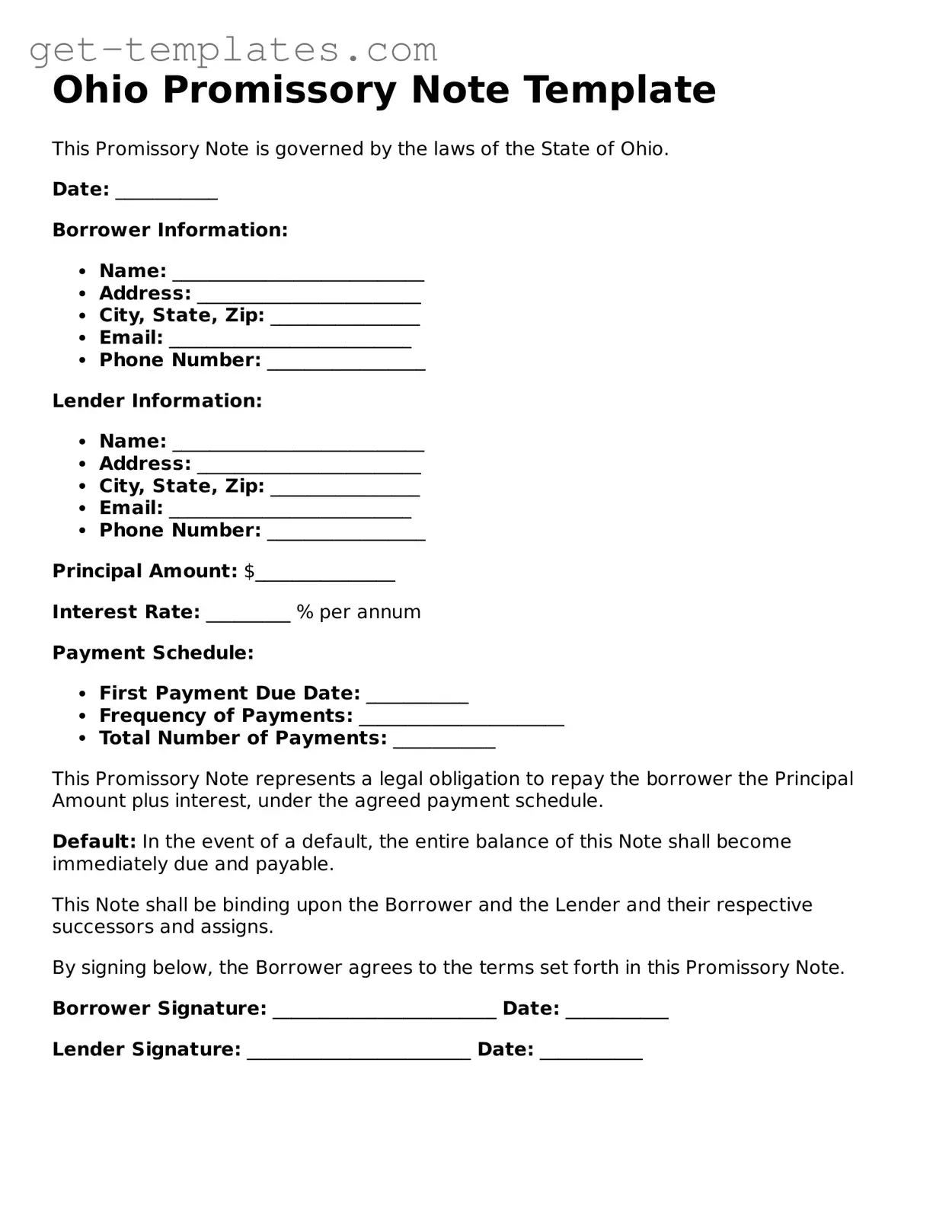Ohio Promissory Note Template
This Promissory Note is governed by the laws of the State of Ohio.
Date: ___________
Borrower Information:
- Name: ___________________________
- Address: ________________________
- City, State, Zip: ________________
- Email: __________________________
- Phone Number: _________________
Lender Information:
- Name: ___________________________
- Address: ________________________
- City, State, Zip: ________________
- Email: __________________________
- Phone Number: _________________
Principal Amount: $_______________
Interest Rate: _________ % per annum
Payment Schedule:
- First Payment Due Date: ___________
- Frequency of Payments: ______________________
- Total Number of Payments: ___________
This Promissory Note represents a legal obligation to repay the borrower the Principal Amount plus interest, under the agreed payment schedule.
Default: In the event of a default, the entire balance of this Note shall become immediately due and payable.
This Note shall be binding upon the Borrower and the Lender and their respective successors and assigns.
By signing below, the Borrower agrees to the terms set forth in this Promissory Note.
Borrower Signature: ________________________ Date: ___________
Lender Signature: ________________________ Date: ___________
